
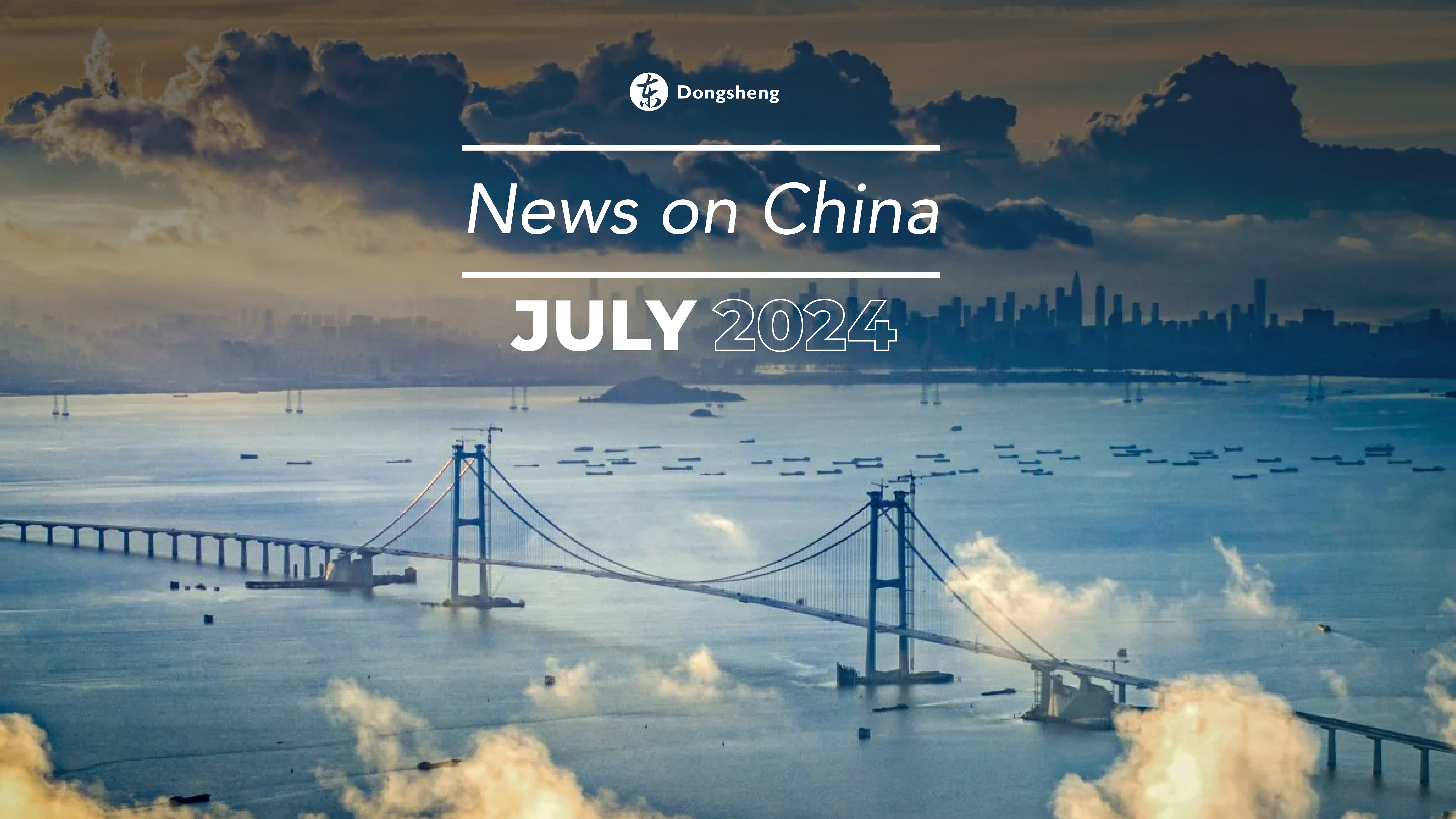
Dear reader,
It has been over four years since we humbly began the News on China digest, with many learnings and changes along the way. We wanted to announce that this July issue will be our last one in the foreseeable future.
Soon, we will send a note about a new collaboration that some of us have been working on, as well as suggestions of other platforms that cover China from a global perspective that you can follow.
We are thankful to every one of our readers who have accompanied us along this journey. For now, please enjoy the issue and we’ll leave you with this song, The Internationale, performed by Zi De Guqin Studio (自得琴社).
—Dongsheng editorial collective
If you don’t have a lot of time, this is what you should know:
- Greater Bay Area integration increases with new Shenzhen-Zhongshan link
- China brokers historic pact for Palestinian national unity
- China increases technological self-reliance as US builds a wall around science
- The Third Plenary Session of the 20th CPC Central Committee
China brokers historic pact for Palestinian national unity
At China’s invitation, 14 Palestinian factions met in Beijing from 21 to 23 July and signed a national unity agreement. The “Beijing Declaration” outlines a comprehensive unity of all Palestinian forces within the framework of the Palestinian Liberation Organization (PLO), including Hamas, which has been governing the Gaza Strip since 2007 and Fatah in the West Bank.
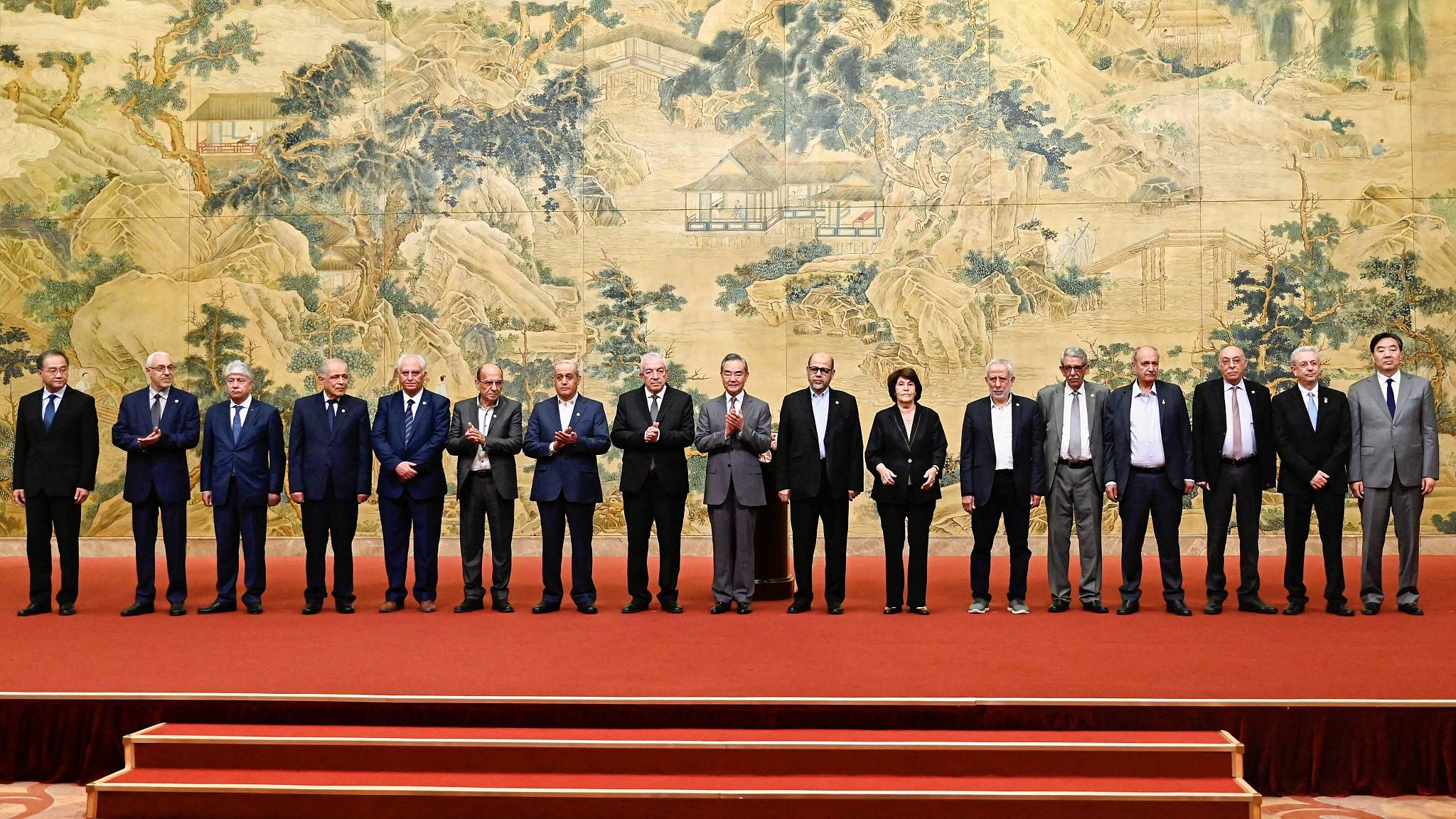
Chinese Foreign Minister Wang Yi with representatives of 14 Palestinian factions in Beijing, China, 07.23.2024 [CFP]
The agreement set out four clauses, including a commitment to establish an independent Palestinian state with Jerusalem as its capital; the right of the Palestinian people to “self-determination and struggling to achieve this by all available means”; the forming of an interim national consensus government that unifies institutions across the West Bank, Jerusalem, and the Gaza Strip; and the deepening of political partnership to develop PLO’s institutions.
The declaration expressed appreciation for the “sincere efforts made by the People’s Republic of China, based on its support for the rights of the Palestinian people and its keenness to end the division and unify the Palestinian position.” Moscow’s efforts were also recognized, having hosted a meeting of around ten Palestinian organizations in February.
China has been playing an increasing role as an international mediator facilitating the historic Iran-Saudi Arabia rapprochement last March. Meanwhile, the US just received Israeli Prime Minister Netanyahu, who was met with massive public protests.
Ukrainian Foreign Minister’s first visit to China and NATO on its 75th anniversary
On the heels of the Palestinian leaders’ visit, Ukrainian Foreign Minister Dmytro Kuleba began his four-day visit to China, initiated by Chinese counterpart Wang Yi. On the agenda for Kuleba’s trip is “China’s possible role in achieving a sustainable and just peace” and “expanding trade and economic cooperation”.
Just two weeks earlier, at the 75th anniversary Summit in Washington, NATO leaders committed to providing “long-term support to Ukraine” and accused Beijing of being a “decisive enabler of Russia’s war”, demanding it halt shipments of “weapons components” to the Russian military. China rejected NATO’s “Cold War mentality and belligerent rhetoric”, and Foreign Ministry spokesperson Lin Jian affirmed China’s constructive role in promoting peace talks and political settlement. Lin also cited the fact that 60% of components in Russia’s imported weapons and 95% of key components of Russian weapons destroyed by Ukraine are supplied by the West.
China increases technological self-reliance as US builds a wall around science
In an interview published days after being wounded in an assassination attempt, Republican presidential candidate Donald Trump said that Taiwan should pay the US for being its “insurance company” and accused the island of having taken “almost 100%” of the US semiconductor industry. The island produces over 90% of the world’s advanced chips, largely through the Taiwan Semiconductor Manufacturing Co Ltd (TSMC), whose shares dropped 2.4% the next day.
Washington’s actions to curtail Beijing’s technological, scientific, and economic advancements under both Trump and Biden administrations have produced contrary results. In the chip industry, after the US government restricted shipments of chipmaking equipment, US manufacturers found themselves more reliant on the Chinese market. For example, China accounted for 43% of sales for Applied Materials (February-April), up 22 points year-on-year, and 42% for Lam Research (January-March), up 20 points.
A recent study, “Building a Wall Around Science”, by researchers at several US universities, found that decreased scientific cooperation with China has adversely affected the US STEM community. From 2016 to 2019, Chinese graduate students became 16% less likely to attend a US-based PhD program and 4% less likely to remain in the US upon graduation. Furthermore, there was a sharp decline in Chinese usage of US research in citations, not reciprocated by the US scientific community. The “heightened anti-Chinese sentiment in the US” negatively impacted US-based Chinese researchers’ productivity. In contrast, Chinese-based researchers’ productivity was not impacted by a decline in US science usage.
China has been focusing on increasing its technological self-reliance, demonstrated this month when a software update from the US CrowdStrike cybersecurity giant caused outages in Windows-based systems worldwide. Aside from some international hotels and businesses, China’s key infrastructure, including banks, airlines, government services, and payment services, was largely unaffected.
Japan’s increasing dependence on Chinese imports
Despite recent Japan-China geopolitical tensions, Japan’s dependency on China for imported goods nearly doubled in three years (2019-2022), accounting for nearly 40% of total imports. China is Japan’s largest trading partner, and its relatively balanced bilateral trade reached US$ 318 billion last year.
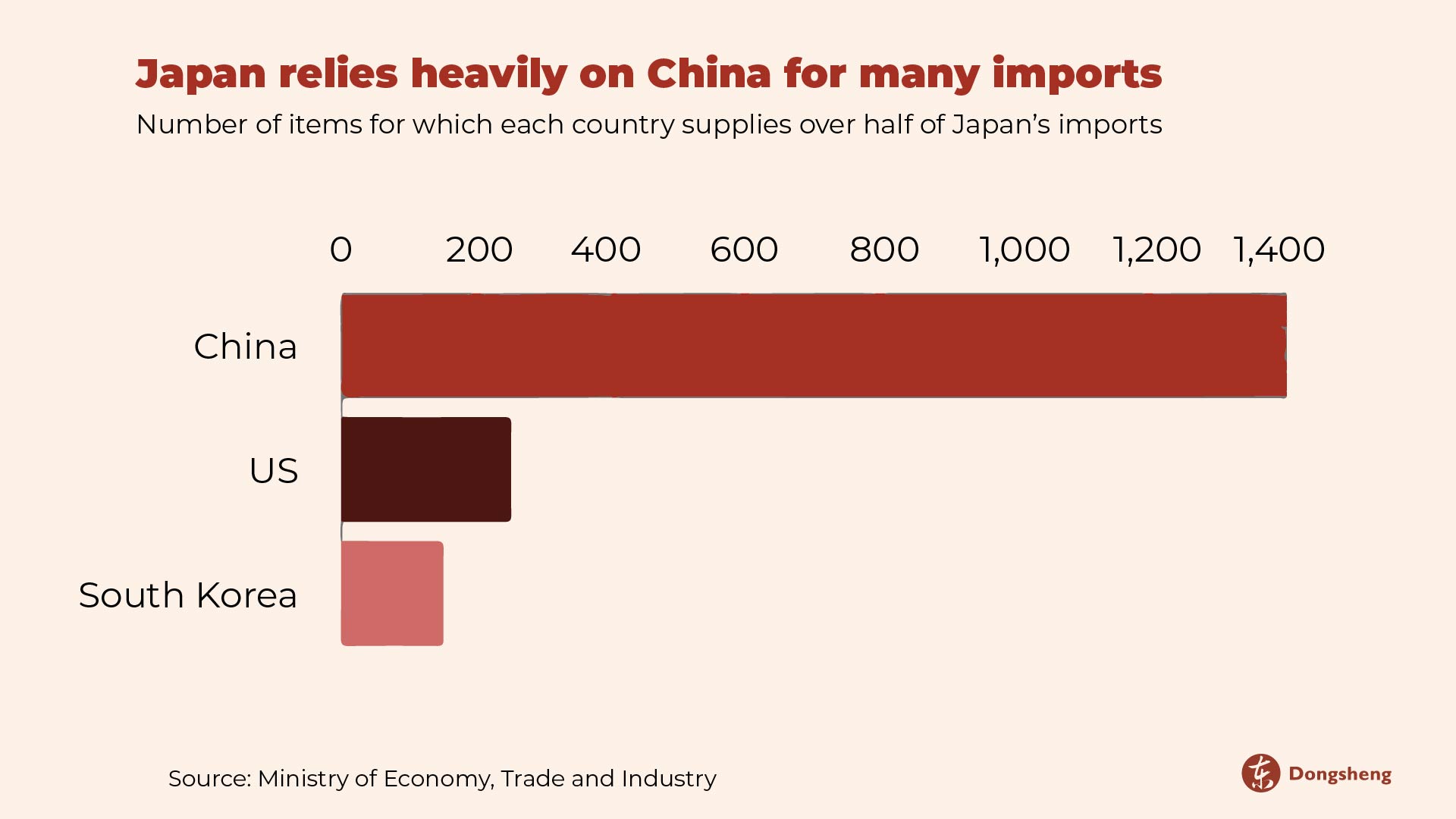
The Third Plenary Session of the 20th CPC Central Committee
The CPC’s Central Committee held its long-anticipated Third Plenary Session, which is usually held one year after the new National Congress leadership is elected. The third plenum has historically drawn attention because significant policy directions are revealed. For example, Deng Xiaoping set the path for reform and opening-up at the 1978 third plenum.

After Xi Jinping presented the Political Bureau work report, the session adopted the 22,000-word Resolution of the Central Committee of the CPC on Further Deepening Reform Comprehensively to Advance Chinese Modernization, which puts forward more than 300 important reform measures on systems, mechanisms, and institutions.
The meeting’s communique stated that by 2035, China will have accomplished four important milestones: finished building a high-standard socialist market economy in all respects, further improved the system of socialism with Chinese characteristics, generally modernized the system and capacity for governance, and realized socialist modernization.
The goal of building a unified national market, including developing a unified urban-rural construction land market, a nationwide integrated technology and data market, and a unified national electricity market, was also emphasized.
The resolution strongly focused on advancing Chinese Modernization, which relies on innovation in technology and science and on further deepening people’s democracy, without which the productive forces will not have the ideological commitment necessary for successful growth. The communique reiterated the need for modernization of material and cultural-ethical growth. Boosting cultural confidence, managing ideological risks, and working to develop an advanced socialist culture are required to promote revolutionary culture and Chinese traditions.
In addition to material development, measures will be implemented to prevent and diffuse risk, especially in real estate, local government debt, small and medium financial institutions, and other essential areas. A strong emphasis was placed on protecting national security while remaining firmly committed to pursuing an independent foreign policy for peace and being devoted to developing a human community with a shared future.
Finally, it was stressed that the CPC leadership will arm all Party members with the Party’s new theories to enhance their understanding of Marxism and, thus, the Party’s capacity to advance the modernization drive through study, communication, and implementation of the CPC’s guiding principles.
At the third plenary, a decision was also made to remove Qin Gang, the former foreign minister who has not been publicly seen in over a year, from the Central Committee. Former defense minister Li Yuchao and the force’s chief of staff, Sun Jinming, were expelled from the party.
China’s economic performance in the first half year and economic plans from the Third Plenary Session
China’s GDP grew 5% in the first half of 2024 to 61.7 trillion yuan (US$ 8.6 trillion), positioning China’s economic growth within this year’s growth target of around 5%, even though the growth rate in the second quarter (4.7%) was slower than that of the first quarter (5.3%). Based on first-quarter data, the IMF raised its forecast of China’s GDP growth to 5% but maintained the world’s forecast of 3.2% growth. The World Bank also raised its forecast for China’s growth to 4.8%.
The major contributor to growth was industrial production (6%), of which high-quality development equipment and high-tech manufacturing were highlighted. For instance, the production of 3D printing devices, new-energy automobiles, and chips increased by 51.6%, 34.3%, and 28.9%, respectively. This growth comes after a 3.9% increase in the overall investment in fixed assets (US$ 3.4 trillion), of which infrastructure (5.4%) and manufacturing (9.5%) compensated for the 10.1% drop in real estate investments.
At the third plenum, the Central Committee pledged to promote financial reforms that grant local governments more “autonomous fiscal capacity“.
Local governments rely heavily on revenue from land sales for their normal functioning and investment process. This is a result of the 1994 tax-sharing reform, which eased the central government’s revenue shortfall necessary to promote economic development but also led to increasing burdens on local governments.
Under the current slowdown and reforms in the real estate market to prevent speculation, local governments face a decrease in their revenue and increasing indebtedness.
Measures in the pipeline include increasing the general transfer payments from the central government to local authorities, handing over consumption tax collection to local governments, and improving the central-local split for shared tax revenue – such as value-added taxes. Last year, local government fiscal revenues accounted for 54% of the national total, while they shouldered as much as 86% of the total expenditure, including key aspects like infrastructure investment.

Annual fixed-asset investment in transportation has surpassed 3 trillion yuan (US$ 412 billion) for seven consecutive years. Last year, it grew to a record 3.9 trillion yuan (US$ 553.5 billion), which equated to an average daily spending of 10.7 billion yuan.
Shenzhen-Zhongshan increases Greater Bay Area integration as Hong Kongers seek medical treatment on the mainland
After seven years of construction and costing 44.7 billion yuan, the 24km Shenzhen-Zhongshan Link opened this month. With the influx of enthusiastic users, the Link’s opening faced hours-long traffic jams. The project includes the world’s longest and widest underwater steel-shell concrete tunnel with eight lanes, spanning over 5km, and numerous intelligent services that can, for example, direct traffic and monitor any car accidents in real-time. Designed to carry 100,000 vehicles daily, the link will reduce travel time between the two cities from 2 hours to 30 minutes, and cut one hour in the Hong Kong-Zhongshan journey to 1.5 hours, further promoting integration in the Greater Bay Area and to create a “one-hour living circle”.
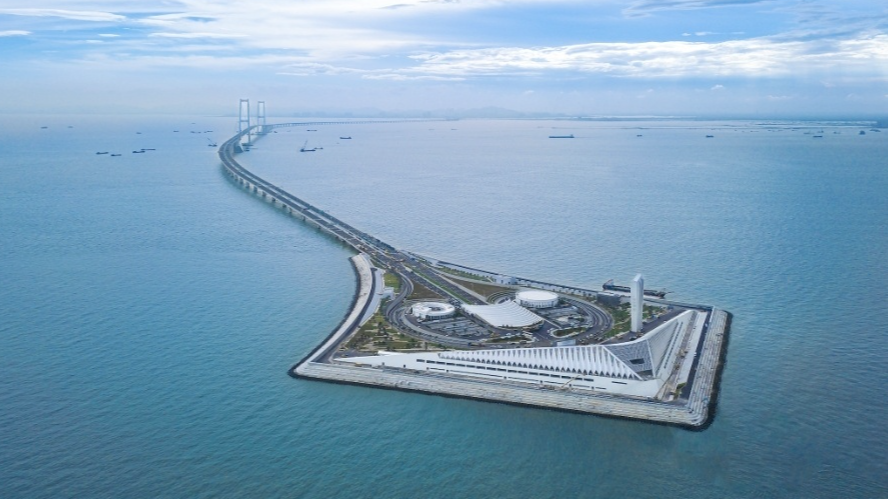
The west artificial island of the Shenzhen-Zhongshan Link in Guangdong Province [CMG]
In recent years, local governments have created policies for cross-border medical integration as Hong Kong residents increasingly turn to the mainland for more affordable and accessible healthcare. The University of Hong Kong-Shenzhen Hospital is one of the pilot hospitals set up to provide care for Hong Kong residents in the neighboring mainland city. In some cases, medicines that cost HK$2 million per year in Hong Kong without government subsidies cost 95% less in Shenzhen, while physical check-ups cost roughly half the price.
Hong Kong’s public health system has notoriously long waiting times, including for a first eye appointment (42 to 85 weeks), ear, nose, throat (14-70 weeks), gynecology (25-60 weeks), and surgery (17-59 weeks). In February, the Hong Kong government announced its annual healthcare vouchers for residents aged 65 and above (HK$2,000 per person) were accepted at seven additional medical institutions on the mainland.

Daily dietary protein: China surpasses US in another living standard indicator
China surpassed the US in the amount of daily dietary protein available to its people, according to a UN Food and Agricultural Organization report covering 187 countries from 2010 to 2021. Chinese people have a daily supply of 124.61 grams of protein per capita, compared with the US (124.33g), Japan (99.11g), India (70.52g), and Nigeria (59.08g)
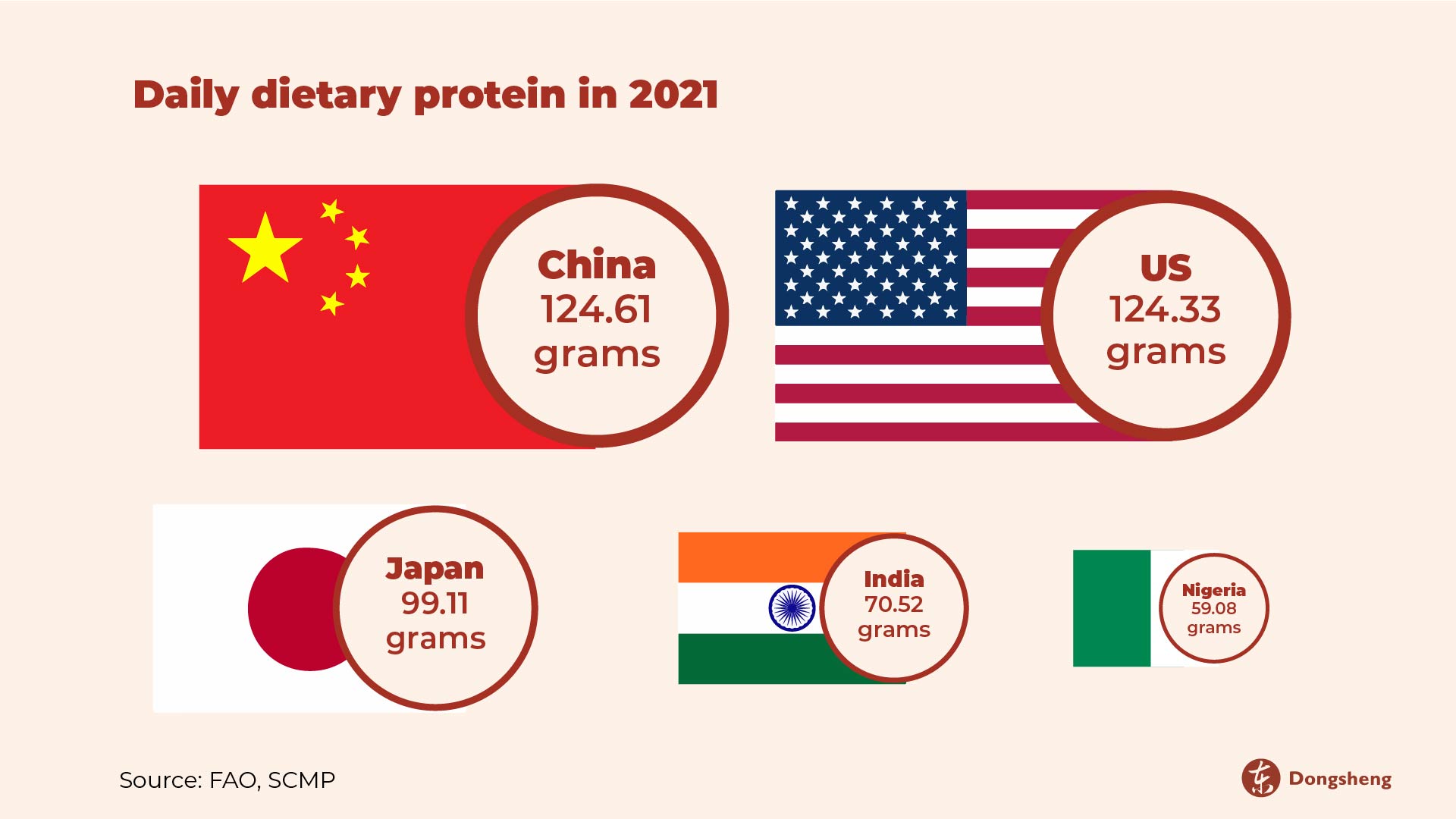
China has already surpassed the US in other key living standard indicators, including life expectancy, healthcare insurance coverage, high-speed rail, and 5G.
New law to protect peasant rights and the socialist rural collective economy
The Standing Committee of the National People’s Congress passed a new Rural Collective Economic Organizations Law that will take effect 1 May 2025. The law safeguards peasant land rights, collective land ownership, and the basic economic system, a legacy of the socialist reforms in the countryside.
According to Zhang Wenmao, former director of the Beijing Rural Research Center, the new law establishes and protects the legal status of the rural collective economy, substantially weakened in the past 40 years. For example, the Law affirms that rural collective organizations are organized by village, township, and group-level communities and must be based on collective land ownership, which cannot be transferred or divided amongst individuals. Furthermore, the functions and responsibilities of these organizations are defined, which covers contracting out land, managing collectively-invested enterprises, distributing collective income, and providing technical assistance and support for education, culture, elderly care, and other social services.
Robotaxis take China by storm and spark public concerns
In 2019, Baidu was the first to obtain a business license for operating autonomous vehicles in Wuhan. In 2022, the Chinese tech giant launched the Apollo Go service, and today has a fleet of over 500 driverless taxis – expected to double by year-end – serving the city of 13.7 million people. Local taxi drivers who are seeing declining incomes have been petitioning Wuhan’s transport authority to limit the use of Apollo Go, which charges between 4 to 16 yuan for a 10km ride and fills 20 orders per car per day, compared with 18 to 30 yuan and 13.2 daily rides by typical ride-hailing vehicles. Furthermore, robotaxis can theoretically operate 24 hours a day, increasing operating hours but decreasing labor costs. Shenzhen, Shanghai, and other cities have also allowed robotaxis to operate in designated regions, as the industry is expected to exceed 2.9 trillion yuan by 2030. After an Apollo Go vehicle ran into a pedestrian this month, the issue sparked broad online debates on road safety and the protection of jobs.
Summer in China: International tourists return and movie of the season
After announcing a series of visa exemptions, China has seen a spike in international visitors, with 14.64 million entries in the first half-year, up 53% year-on-year. Last year, China began issuing unilateral visa waivers (France, Germany, Australia), mutual visa exemptions (Singapore, Malaysia, Thailand), and visa-free transit for people from 54 countries (US, UK, Canada, South Korea, Japan, etc.). For hotel bookings, Shanghai, Beijing, and Guangzhou top the list, while Rongjiang – the home of the cunchao, or Village Super League – saw the largest increase of 250% in hotel bookings from January to May 2024.
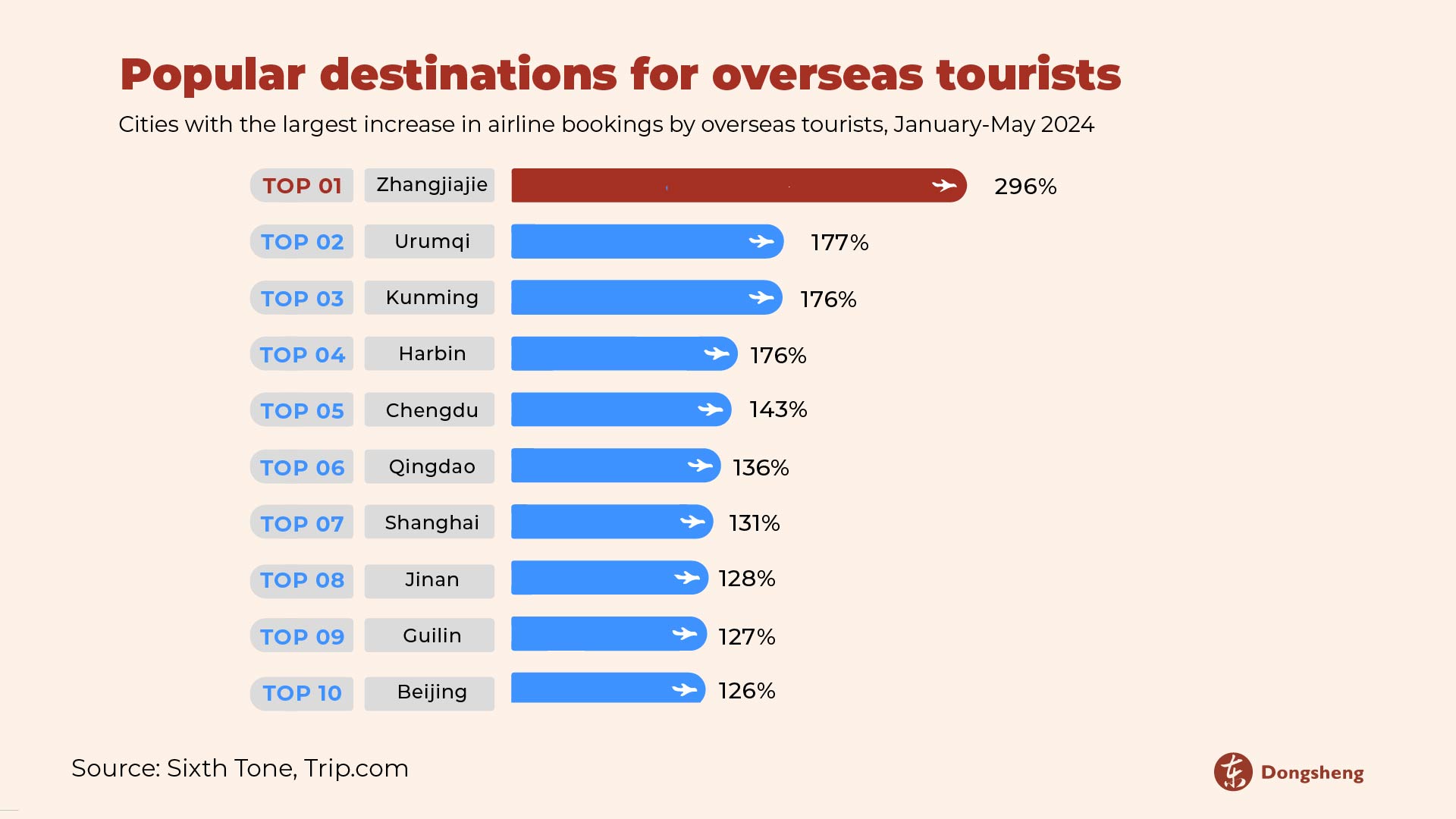
Tokyo-Shanghai is the busiest of the recovering flight routes, but overall, Japan-China flights still fell short of the same period in 2019. Meanwhile, Europe-China flights have seen an increase of 16% compared to 2019. US-China flights have seen a slower recovery, with only 95 weekly flights compared to 359 in 2019.
“Successor”, a satirical comedy about wealthy and controlling “tiger parents”, becomes the first film of the summer to gross over 100 million yuan in a single day. Co-starring comedians Shen Teng and Ma Li, the movie provides a critique of Chinese-style education that places huge pressure on children to advance in a competitive society. Despite its success and a high 7.5 score on China’s film-rating site, Douban, the film has also drawn online complaints from parents who feel “lectured” while watching the film. In recent years, the Chinese government has emphasized the reduction of the educational burden on students as well as curtailing the private tutoring industry in an attempt to address education inequality.





